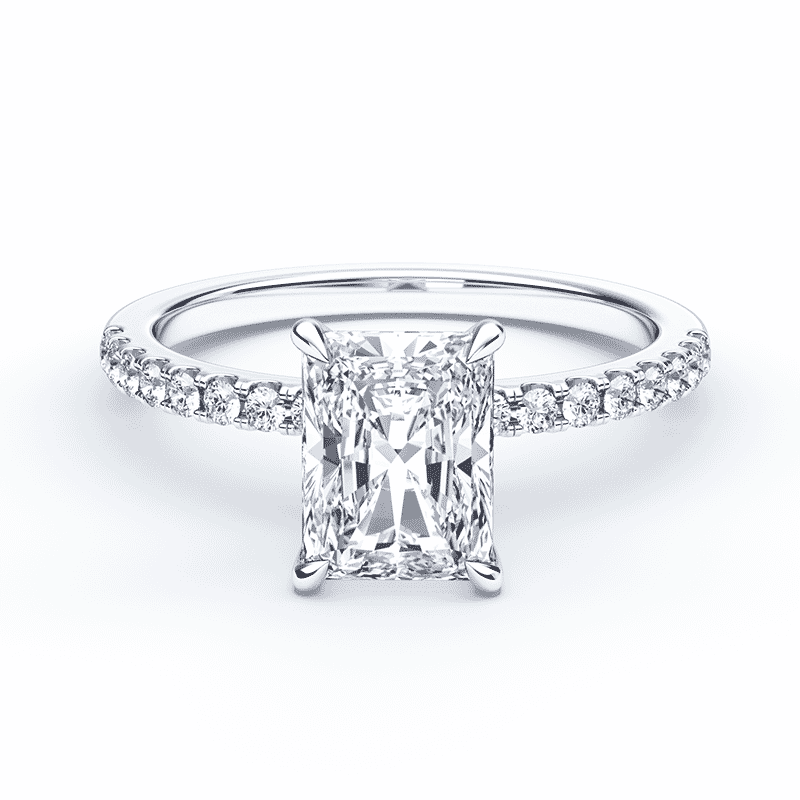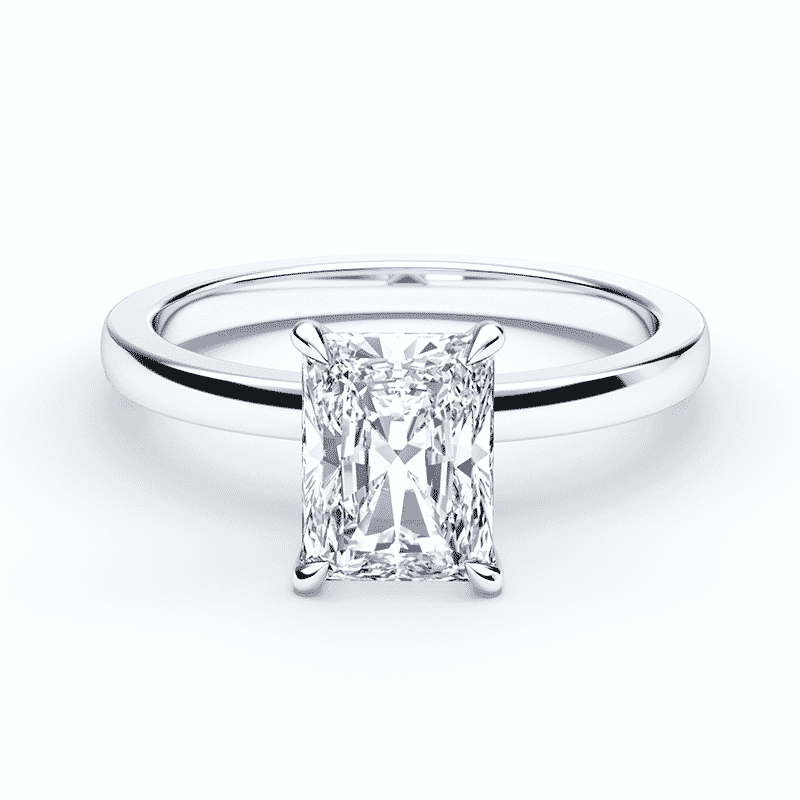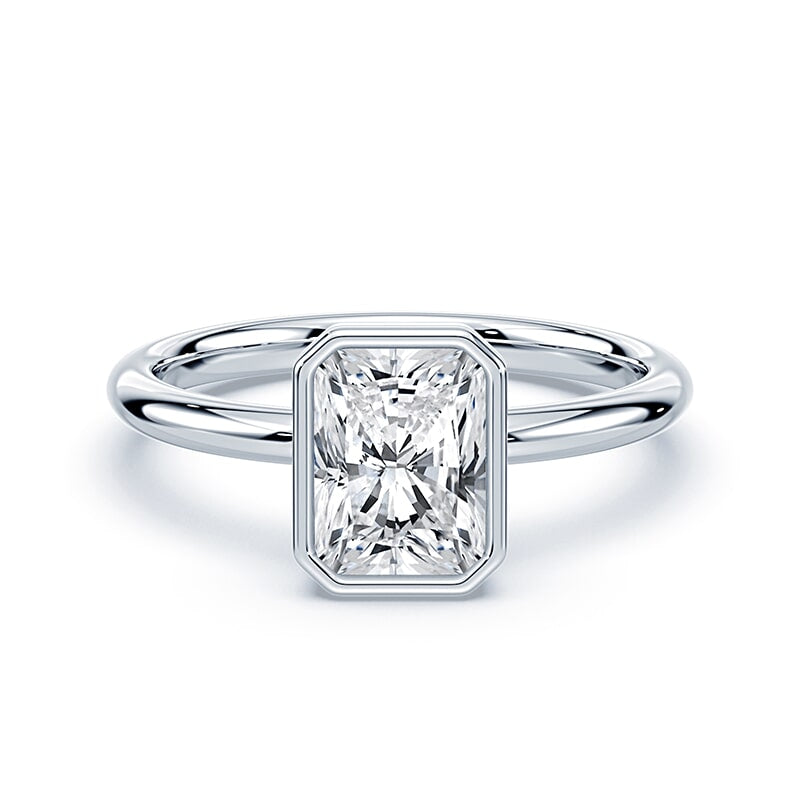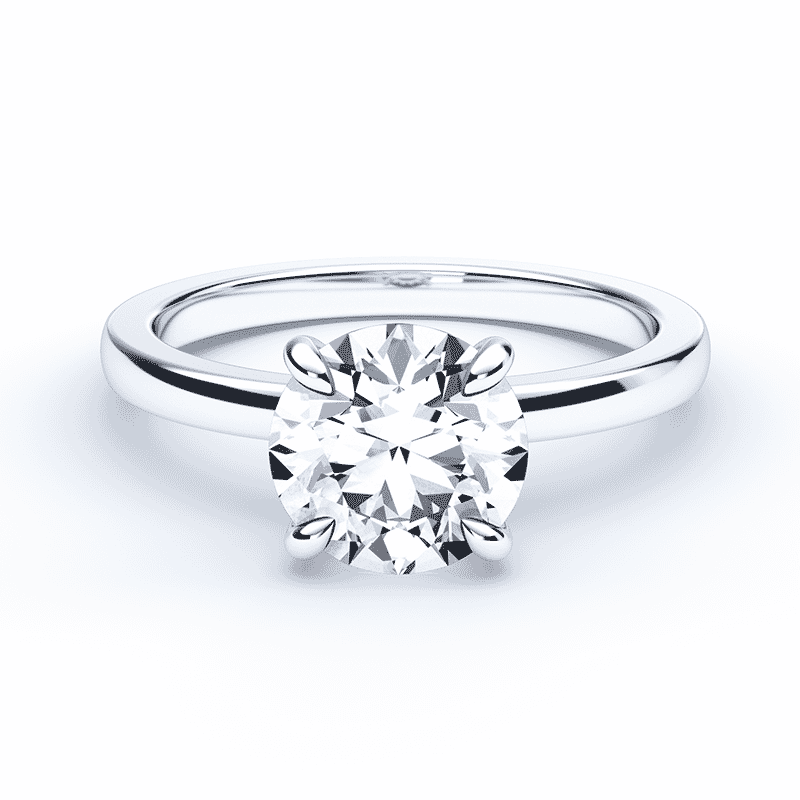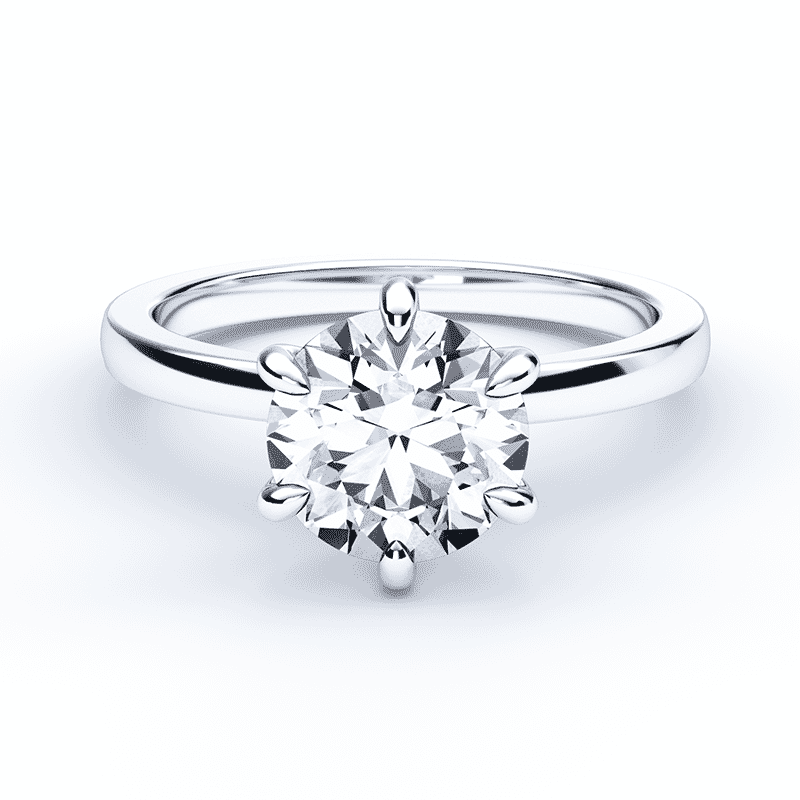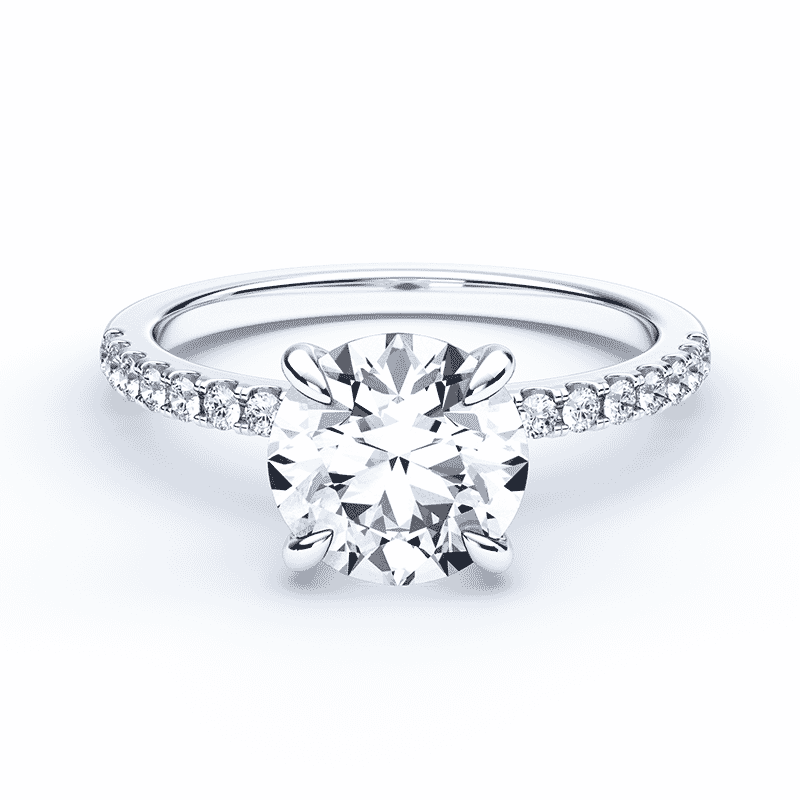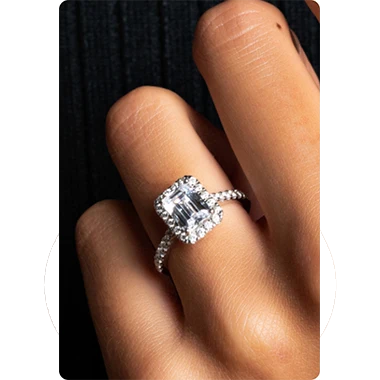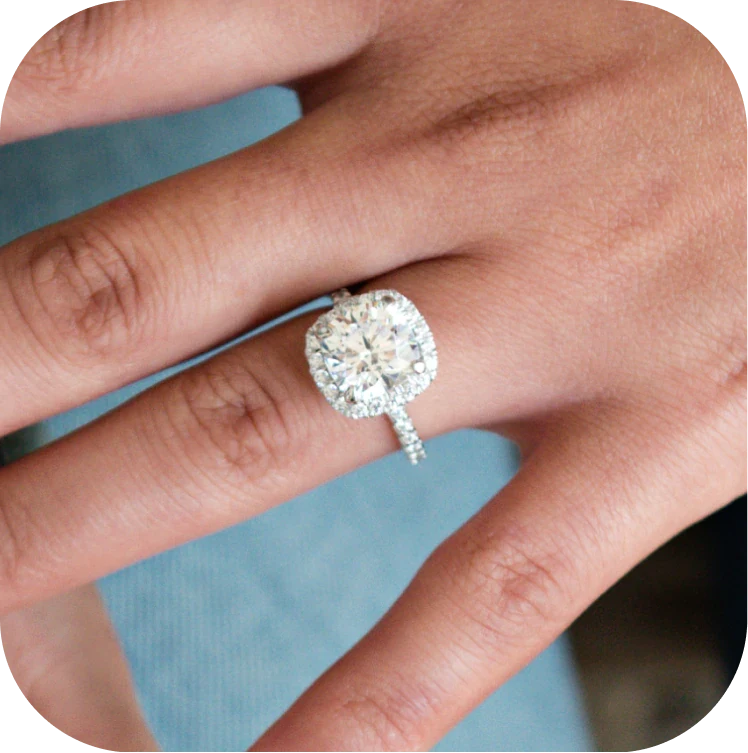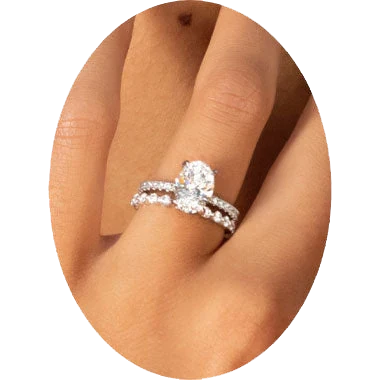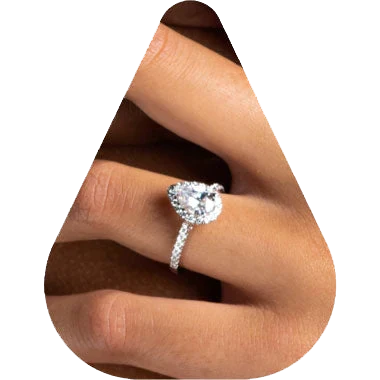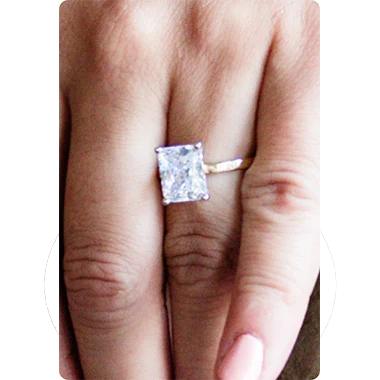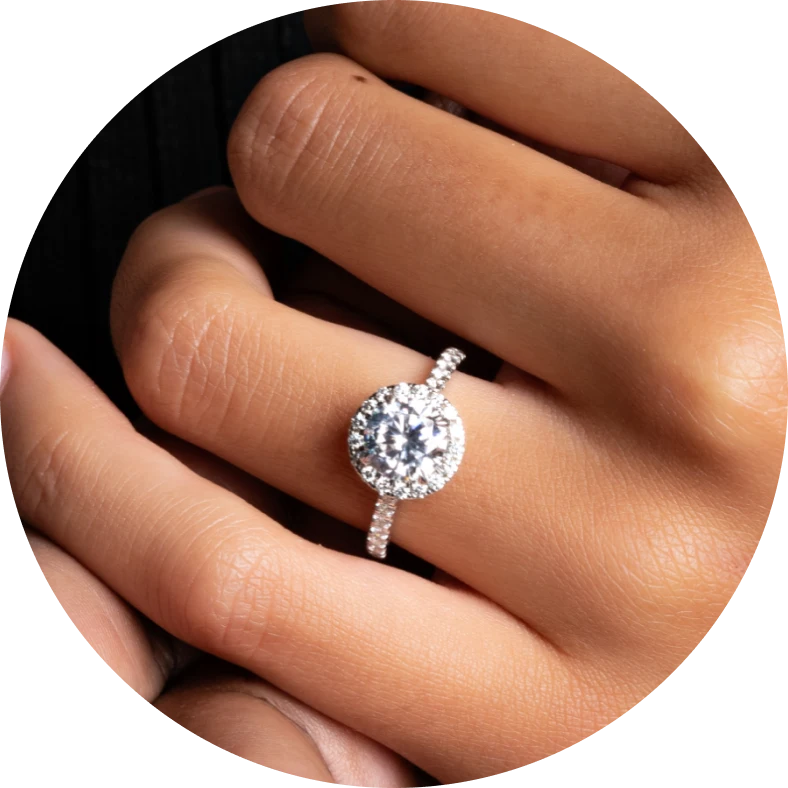Diamond Clarity Chart
fl
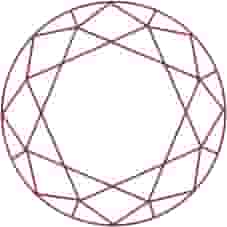
if


flawless

internally flawless
vvs1

vvs2
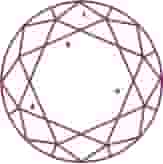

very very slightly
included
vs1
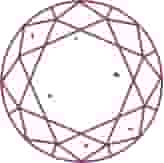
vs2
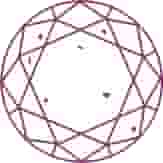

very slightly included
si1
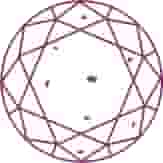
si2


slightly
included
BESTSELLERS
Shop Our Different Diamond Cuts
Which Diamond Clarity is Best? What is a High Diamond Clarity?
This is probably what you came here to learn, right? This page is full of tons of information we hope you find helpful, but it can be easy to get overwhelmed.
There’s plenty to learn in-depth, but here’s a shortcut for lab created diamonds: VS2 and up is a safe space. These diamonds ought to be ‘eye clean’ which means you can’t see anything without training and 10x magnification (or at least super eagle-eye vision). If you’re looking at a diamond without magnification and can still see inclusions, it’s most likely you’ve got an SI2 or lower.
But if you’re looking for great value, don’t automatically reject diamonds in the SI range; Plum offers SI1 because there can be awesome value in this range for brilliant cut diamonds (round, oval, cushion, radiant, and pear). When looking at an SI1 diamond, check out how difficult it is to see inclusions in the photos and take a look at the clarity plot. More on that soon.
Of course there’s an exception to this rule of thumb; Emerald Cut diamonds are step cut, meaning their facets are long, straight and unforgiving. It’s more important to go for VVS grades if you don’t want to see characteristics within your Emerald Cut diamond. By contrast, the brilliant cuts have way more facets and are designed to reflect tons of light, which will also mask many imperfections, letting you get away with a lower clarity grade. This is one of the reasons why diamond cut grade and diamond cuts are both so important to understand. Read up on Diamond Cuts here
GET STARTED

Quick Tips
Soon you’ll know how diamonds are graded on a clarity scale, which essentially describes the presence and/or absence of certain diamond characteristics. In a nutshell, here are a few things to remember when it comes to Diamond Clarity –
-
 Lab and mined diamonds are graded by many of the same labs - even the GIA - and usually by the same grading scales.
Lab and mined diamonds are graded by many of the same labs - even the GIA - and usually by the same grading scales. -
 Inclusions and blemishes are not typically considered as ‘flaws’. Jewelers often call them characteristics. Their presence doesn’t automatically degrade the diamond’s value or WOW factor.
Inclusions and blemishes are not typically considered as ‘flaws’. Jewelers often call them characteristics. Their presence doesn’t automatically degrade the diamond’s value or WOW factor. -
 Typically the fewer characteristics detected, the higher the clarity grade on the clarity scale. Lab diamonds are grown in a controlled environment and in our experience have higher clarity grades in general than many mined diamonds.
Typically the fewer characteristics detected, the higher the clarity grade on the clarity scale. Lab diamonds are grown in a controlled environment and in our experience have higher clarity grades in general than many mined diamonds. -
 Very included diamonds low on the diamond clarity scale can have problems with durability and be prone to breakage. Thankfully, this is not an issue with lab grown diamond engagement rings we offer, which are all graded SI1 and higher.
Very included diamonds low on the diamond clarity scale can have problems with durability and be prone to breakage. Thankfully, this is not an issue with lab grown diamond engagement rings we offer, which are all graded SI1 and higher. -
 A perfectly Flawless diamond is typically more myth than reality. Expensive, very rare, and probably boring.
A perfectly Flawless diamond is typically more myth than reality. Expensive, very rare, and probably boring.

What is Diamond Clarity?
Diamond Clarity is a reference to how clean and clear a diamond is, and a diamond clarity chart or scale reflects the assessment of characteristics seen on the surface of the diamond or inside it. The small imperfections that are present over the surface are sometimes called ‘blemishes’, and the characteristics that are present within the diamond can be called ‘inclusions’. You’ve probably also heard terms like flaw, feathers, pinpoints, etc. We’ll get more into those specifics later on.
It is important to keep in mind that a diamond’s beauty and WOW factor don’t automatically get downgraded because of diamond clarity. Sometimes a diamond’s value is barely impacted. In many cases, flaws are not even visible to the naked eye. This is the reason why gemologists around the world refer to ‘inclusions’ as ‘internal characteristics’ instead. Professionals don’t automatically consider diamond characteristics to be ‘flaws’, and neither should we. There’s more to the story of diamond clarity than just what’s recorded on a diamond grading certificate.
Diamond Clarity Chart
Originally developed by the Gemological Institute of America (GIA), this diamond clarity chart helps us understand diamond clarity grade. Diamond Clarity is basically a qualitative metric that grades all of the diamond’s visual internal inclusions or surface blemishes. The grading applies to lab created and mined diamonds.
We believe the unique characteristics within diamonds help give them beauty and character outlined on a diamond quality chartDiamonds with the smallest or fewest ‘inclusions’ are extremely rare and not only receive the highest clarity grades but also have the highest price tags. Approximately 1 in 5,000 diamonds will be graded Internally Flawless or Flawless. Lab and mined diamonds that are completely flawless are very rare, expensive, and - in our opinion - not worth it. Like people, a few interesting imperfections aren’t going to ruin the whole package. Nobody’s perfect, right? Diamonds are pretty much the same.
| Clarity Grade | DESCRIPTION |
|---|---|
| FL | Flawless diamonds have absolutely no blemishes or inclusions, even under 10x magnification. Extremely rare. |
| IF | Internally flawless diamonds have no inclusions, even under 10x magnification. Extremely rare. |
| VVS1 | Very Very Slightly Included (1st Degree) diamonds have inclusions that are not all visible to a very skilled grader, even under 10X magnification. |
| VVS2 | Very Very Slightly Included (2nd Degree) diamonds have inclusions that are not all visible even under 10X magnification. |
| VS1 | Very Slightly Included (1st Degree) diamonds have inclusions that are visible under 10X magnification but are minor. It can take a lot of time for a skilled diamond grader to actually spot them. |
| VS2 | Very Slightly Included (2nd Degree) diamonds have inclusions that are noticeable under 10X magnification. However, they are almost always invisible to the naked eye. |
| SI1 | Slightly Included (1st Degree) diamonds have inclusions that can be easily spotted under 10x magnification. SI1 brilliant cuts usually invisible or appear as clean to the naked eye. |
| SI2 | Slightly Included (2nd Degree) diamonds have inclusions that are much more clearly observable under the microscope. In step cuts like Emerald Cuts and Asscher Cuts, SI2 diamonds Inclusions will be visible to the naked eye. |
| I1 | Included (1st Degree) diamonds have inclusions that can be quickly spotted and may impact the brilliance and transparency of the diamond. |
| I2 | Included (2nd Degree) diamonds have Inclusions that are clearly observable to the naked eye that can highly compromise the diamond’s brilliance and the beauty. |
Does this Diamond Clarity Chart Work with Lab Diamonds?
Yes, lab grown diamonds and mined diamonds are graded exactly the same way on a diamond quality chart, albeit usually by different grading labs. Until recently, the world’s premier grading lab, the Gemological Institute of America (GIA), did not grade lab grown diamonds, but they have since embraced the technology and now grade and certify lab diamonds.
Lab diamonds are formed in controlled environments. But that doesn’t mean that every lab environment is going to produce a perfectly clear diamond. Carbon-rich gases used in some growth methods are mixed with other elements, and every growth cycle is going to be slightly unique. Scientists have been working for decades to perfect lab grown diamonds, and the expensive process requires extreme amounts of heat and pressure which can result in variations in diamond clarity and color.
These characteristics help make each diamond unique. Unless - you can see them with the naked eye and they bother you. Then, these unique ‘birthmarks’ do not seem so special, and you want to learn how to minimize the visual impact of any characteristic that’s going to distract from your diamond’s sparkle.
Mined diamonds from the earth develop in fundamentally similar ways through heat and pressure. However, mined diamonds usually form with an increased number of ‘blemishes’ and/or ‘inclusions’. It only makes sense, since they are not developed in a controlled environment. In our experience, lab created diamonds are more often higher in clarity than their mined counterparts.
Who Makes the Diamond Clarity Chart?
Today the Gemological Institute of America (GIA) certifies lab and mined diamonds using their Diamond Clarity Scale, or Diamond Clarity Chart. In fact, most grading labs, jewelers, wholesalers, and generally everyone in the industry uses terms that the GIA developed and standardized.
The GIA’s clarity chart is also known as the Official GIA Diamond Clarity Scale. The GIA developed the grading vocabulary as well as the methodology required to determine a diamond’s clarity grade. Believe it or not, before that, terminology was so all over the place, jewelers used to use words like ‘water’ and ‘river’ to describe how clear a diamond was.
Now, we most often all use this one diamond clarity chart based on one scale - the GIA’s - when considering all sorts of factors and taking into account the different types of ‘inclusions’ (internal) and ‘blemishes’ (surface level).
Diamond Clarity Chart: What are the Levels of Clarity in Diamonds?
Let’s dive into what you’ll find in a Diamond Clarity Chart and how to use one. The GIA Diamond Clarity Chart has 6 categories which are further divided into subcategories, taking the total to 11 types of gradation. These are as follows –
FLAWLESS (FL)
No Inclusions or Blemishes on the diamond when seen through 10X magnification. Rare, expensive, no one really needs a Flawless diamond
INTERNALLY FLAWLESS (IF)
No Inclusions, only Blemishes that can be detected by a highly skilled diamond grader under 10X magnification. Like Flawless, not practical or necessary to go this high in clarity.
VERY, VERY SLIGHTLY INCLUDED (VVS1 AND VVS2)
Inclusions are very difficult to see even for a skilled diamond grader under 10X magnification. You’ll actually find a lot of lab grown diamonds fall into this range, but mined diamonds in this gradation are still rare.
VERY SLIGHTLY INCLUDED (VS1 AND VS2)
Inclusions are either minor or stay between somewhat easy to difficult to observe for a skilled diamond grader using 10X magnification. Still lots of lab created diamonds in this gradation.
SLIGHTLY INCLUDED (SI1 AND SI2)
Inclusions can be seen by a skilled diamond grader under 10X magnification. A good place to look for value; when you can find diamonds in this range with inclusions that are hard to see or under a prong, you can save money without sacrificing beauty. Plum does not offer diamonds that are graded under SI1.
INCLUDED (I1, I2,AND I3)
Inclusions are obvious under magnification and probably can be seen with the naked eye. They can affect the quality, durability, transparency, and overall brilliance of the stone. Mass jewelers might carry these diamonds and low prices. Plum does not offer diamonds that are graded in this range.
Browse by Shape
What About the International Gemological Institute (IGI) Diamond Clarity Chart?
Lab and mined diamonds are graded by the same criteria, but often by different grading companies. When it comes to a lab grown Diamond Clarity Chart, the International Gemological Institute (IGI) is one of the most relevant. It’s an authorized and trusted certification laboratory that is known to maintain global standards. Under the IGI certification, the Diamond Clarity Chart of lab-grown diamonds consist of the same grades as the GIA –
- Internally Flawless (IF)
- Very Very Small Inclusions (VVS1)
- Very Very Small Inclusions 2 (VVS2)
- Very Small Inclusions 1 (VS1)
- Very Small Inclusions 2 (VS2)
- Small Inclusions 1 (SI 1)
- Small Inclusions 2 (SI 2)
- Inclusions 1 (I 1)
- Inclusions 2 (I 2)
The factors that are considered for any recognized Diamond Clarity Chart for lab grown diamonds are the same factors involved in assessing natural diamonds, likewise the process of using 10X magnification as a yardstick is also the same across lab and mined diamonds.
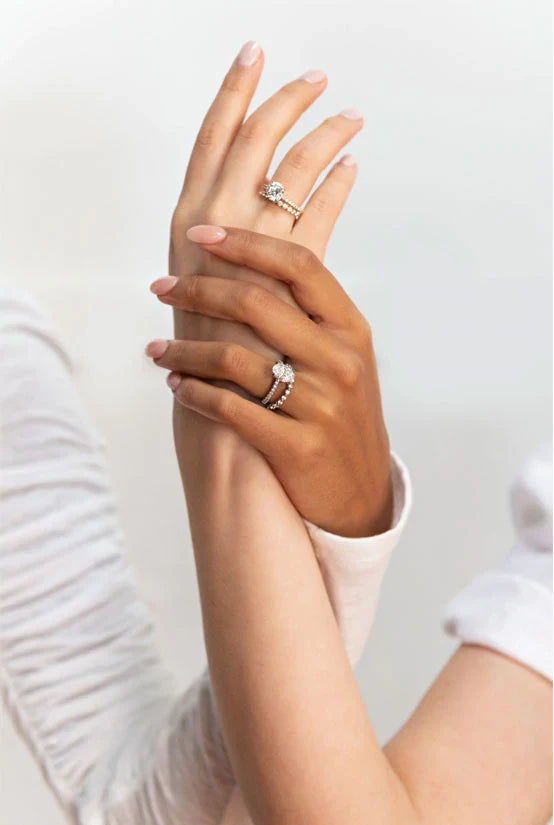
What About the American Gem Society (AGS) Diamond Clarity Chart?
There is also a Diamond Clarity Chart developed by the American Gem Society (AGS) with the same categories only with different grading numbers.
For example, the Flawless and the Internally Flawless diamonds are graded as AGS 0, the Very, Very Slightly Included are graded as AGS 1 or 2, the Very Slightly Included are graded as AGS 3 or 4, the Slightly Included gets graded as AGS 5,6 or 7 and the Included diamonds are graded as AGS (7,8,9 or 10).
Even diamonds officially graded by the AGS are often informally assigned grades that match grading criteria on GIA reports, to help consumers and jewelers compare apples-to-apples.
Crash Course: Anatomy of a Diamond
Before jumping into the nitty gritty of types of inclusions and grading factors, it’s helpful to understand the basic parts to a diamond
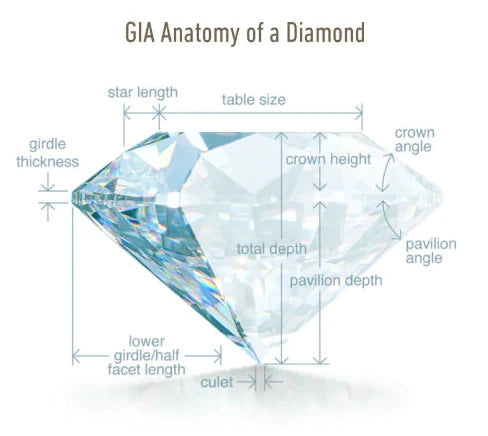
New Arrivals
Shop New Arrivals
Different Types of Inclusions
There are different types of inclusions within lab and mined diamonds, and every type has a handful of variables. Diamonds truly are like snowflakes in this sense. Keep in mind, when looking at lab diamonds graded SI1 and higher, you won’t have to worry too much about any of these being very prominent. Double check photos and videos to reference the location, size, and contrast of your diamond’s inclusions.
Here are some of the most common types of inclusions:
BEARDING
CAVITY
CLOUD
CRYSTAL
FEATHER
GRAINING
NEEDLE
PINPOINT
Clarity Plots
What’s a diamond clarity plot? Consider it a map of a diamond’s characteristics. It will show most blemishes (surface) and inclusions (internal) - some characteristics might not be included if they are too widespread or too faint.
A clarity plot is great to help choosing diamonds when taking into account the clarity grade, and also great to help identify a diamond. No two diamonds will have exactly the same clarity plot, sort of like people and snowflakes.
Some labs have different names for clarity plots, for example the IGI just refers to their chart as “Diamond Characteristics”.
Again, with lab grown diamonds graded SI1 and higher, you probably won’t have tons of marks on your clarity plot, because there shouldn’t be many imperfections.
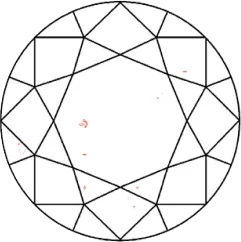
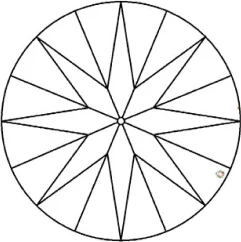

How to Evaluate Diamond Clarity and How are Clarity Grades Determined?
Outside of a diamond clarity scale, evaluating Diamond Clarity requires experienced diamond graders and skilled gemologists. It’s not as simple as putting a diamond under a microscope, increasing the magnification to 10X, and then counting spots. It’s sort of a matrix with the types of characteristics (graining, feathers, etc.) and mixed with factors around those characteristics.
There’s a set of 5 specific factors: Size, Number, Nature, Location and Relief –
SIZE
If all the other factors are equal for two diamonds, the size of the Inclusion determines the grade of the diamonds. The bigger the size of the Inclusion, the more visible and the lower the clarity grade will be on a diamond quality chart. If an Inclusion is large enough it can even impact the overall durability of the diamond.
It’s helpful to note that the size of the Inclusion along with its effect on the stone is always considered in relation to the actual size of the diamond. Inclusions with the largest impact on the clarity of diamonds are called ‘grade setters’ as those marks are the ones that actually determine the clarity grade of the diamond.
NATURE
The Nature factor depends on the nature or characteristic of the Inclusions or Blemishes and how those characteristics affect the appearance of a diamond. It also considers the relative superficiality or depth of those Inclusions and Blemishes.
Depending on how deep an Inclusion is or how big a Blemish is, the clarity grade will swing higher or lower.
RELIEF
Relief refers to the distinctness of the Inclusions in contrast to the actual diamond. If there is a high contrast between the Inclusions or Blemishes and the rest of the diamond, the greater the impact on overall clarity. Relief is not the same as color of the inclusion, but it can serve a little to signal color. For example, a dark brown inclusion isn’t noted as brown in color, but there would be a high contrast or relief against a colorless diamond backdrop.
The more obvious the inclusions are to the naked eye, the more the clarity grade will take a hit.
NUMBER
The Number criterion is simple. When a diamond is looked at face-up under 10X magnification, the more inclusions a diamond grader can see, the lower the clarity grade of the diamond.
A diamond does not normally lose a good clarity grade based on the sheer number of Inclusions, but the diamond grader will take into account how many are clearly visible.
LOCATION
Just like how it sounds, this factor depends on the location of the Inclusion or the Blemish. If an Inclusion is found closer to the diamond’s ‘center of the table’, the greater the impact on its clarity grade. (The diamond’s ‘center of the table’ is the flat surface facet located on the top and center of a diamond. Check out our diamond chart above.)
Inclusions that are farther away from the ‘center of the table’ and are closer to the girdle are usually more difficult to notice. But keep an eye out for ‘surface reaching’ inclusions, which can increase the risk of damage if the diamond ever accidentally slams into a hard object. You will not have this issue with diamonds graded SI1 and above, although it’s always a good idea to take care of your ring and treat it like the special piece of jewelry that it is. Diamonds are made of the hardest material on earth, but that doesn’t mean they are indestructible!
Inclusions that are present near the pavilion of the diamond can sometimes reflect, because pavilion facets act as mirrors. The more the Inclusions get reflected, the bigger the potential impact on the clarity grade.
In addition to all this, the way a diamond is shaped, the cutting proportions and how the facet arrangement is achieved can also impact the clarity grade. These factors can obscure clarity or amplify the clarity features.
More FAQ
-

 WHAT ARE UNEQUAL INCLUSIONS?
WHAT ARE UNEQUAL INCLUSIONS?Unequal inclusions are just how they sound: some are more significant than others. For example, some are shiny and clear while other inclusions are dark and stand out. Likewise, the location and size of the inclusion also matter.
The diamond’s clarity grade will usually account for the size of the inclusion, but not the color or location. This means you can have two diamonds with the same clarity grade that that look very different: one inclusion might be right on the table of the diamond, the other might be tucked away out of sight. That second diamond, the “eye-clean” one is what you want. Check plotting charts and images what choosing your diamond.
-

 Which is better VS1 or VS2? Is SI2 diamond clarity good?
Which is better VS1 or VS2? Is SI2 diamond clarity good?Very Slightly Included, or the VS range, is a step above SI.
SI1 and SI2 are a clarity step lower than VS, and the SI stands for Slightly Included. We believe it’s possible to find good value in SI1, however most of the lab grown diamonds we carry are already higher clarity grades. When you’re considering SI1 diamonds, take extra care to make sure you won’t get an inclusion or other blemish that you’re not happy with. A good buy in a lower clarity grade will have inclusions that aren’t front and center.
Is SI2 diamond clarity bad? It depends - each diamond is different, and everyone’s taste is different. We carry diamonds graded SI1 and higher because we think you’ll be more likely to find a stunning diamond when you’re focused on the highest quality grades. It will be easier to spot inclusions when you’re in the SI range. But no, we wouldn’t automatically say an SI2 clarity grade is bad without seeing the diamond.
-

 How low can you go with the Diamond Clarity Chart and still make a quality buy?Our experience tells us that staying in the SI1 and higher range will keep you in safe territory. It will depend somewhat on the diamond cut though; for example, emerald cut diamonds should be in the higher clarity grade range because they’re cut in a way that makes it easy to see inclusions. Round brilliant diamonds, on the other hand, have a faceting pattern that’s fiery and forgiving of imperfections.
How low can you go with the Diamond Clarity Chart and still make a quality buy?Our experience tells us that staying in the SI1 and higher range will keep you in safe territory. It will depend somewhat on the diamond cut though; for example, emerald cut diamonds should be in the higher clarity grade range because they’re cut in a way that makes it easy to see inclusions. Round brilliant diamonds, on the other hand, have a faceting pattern that’s fiery and forgiving of imperfections.
-

 Are All Diamonds Graded with a Diamond Clarity Chart?All certified diamonds will have a clarity grade. However, not all diamonds are certified and graded for clarity. Plum only carries certified lab grown diamonds, so all of our diamonds do come with a diamond clarity grade.
Are All Diamonds Graded with a Diamond Clarity Chart?All certified diamonds will have a clarity grade. However, not all diamonds are certified and graded for clarity. Plum only carries certified lab grown diamonds, so all of our diamonds do come with a diamond clarity grade.





